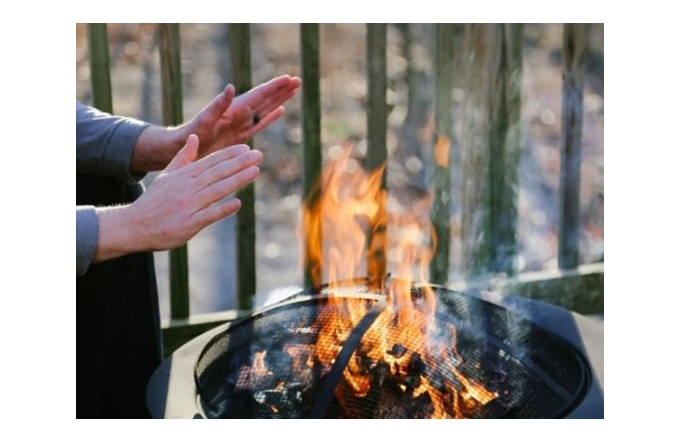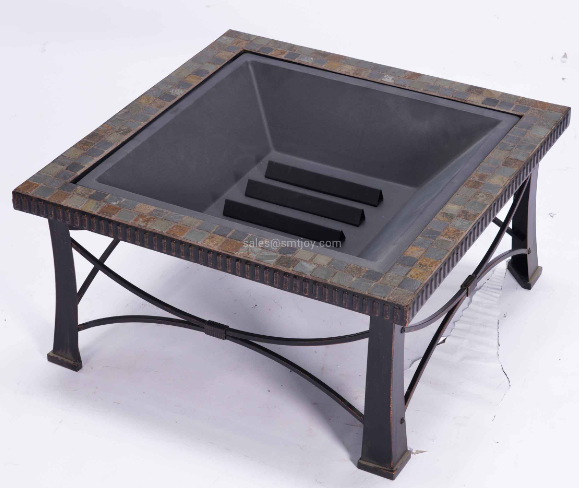Address
304 North Cardinal
St. Dorchester Center, MA 02124
Work Hours
Monday to Friday: 7AM - 7PM
Weekend: 10AM - 5PM
Address
304 North Cardinal
St. Dorchester Center, MA 02124
Work Hours
Monday to Friday: 7AM - 7PM
Weekend: 10AM - 5PM


Which are better, wood or gas fire pits? Trying to decide on a fuel type for your fire pit? You probably already know your choice will come down to wood, propane, or natural gas. Even your choice between propane or natural gas may be limited by what you have available, so your choice really may come down to just wood or gas.
Wood
A wood fire pit is simple to light, but not always easy to light. If you have wet fuel or lack the ability to create a strong fire, you’ll be left with a less than ideal experience. On the bright side, fuel is abundant if wood is available, and you’ll never have to worry about pooling gases.
Gas
Gas fire pits are easy to ignite with a match or an integrated ignition system, the latter of which isn’t an option with a wood fire pit. You may have to worry about fuel supply, but this issue can be mitigated by connecting your fire pit to your home’s supply line. (Always be sure to consult a gas specialist when working with gas lines.)
Ignition Advantage:
If you’re in town with reliable access to natural gas or propane lines, your project may be better suited for gas. If you’re in a rural area without a reliable gas supply or you don’t mind chopping your own wood, consider a wood fire pit.
Wood
Wood fire pits aren’t inherently dangerous. However, you’ll need to take care to ensure safe burn conditions, especially if the weather is dry and windy. You’ll also need to make sure your fire is completely extinguished before leaving it unattended to avoid any potentially dangerous flare-ups.
Gas
Head to head, gas fire pits are generally considered to be safer than wood fire pits because of the way the fuel can be controlled. In many cases, gas fire pits will also have integrated pilot systems, flame sensors, and automatic shutoff systems as an added level of protection. While these systems can all improve safety, gas fire pits can still be dangerous if improperly operated. Always be sure to follow manufacturer guidelines.
Safety Advantage:
If safety is your top priority, a gas fire pit will be your best bet. Commercial customers will want to keep in mind that gas fire pits also allow for more control and can decrease the likelihood of guest accidents. With gas, you can also take advantage of accessories like automatic shutoffs for even more peace of mind.
Wood
Wood fire pits can be customized in a variety of ways to suit your personal preference. Manufacturers like Fire Pit Art take this customizability to the next level with eye-catching designs to meet the needs of your outdoor space. However, wood only burns in one way, so you won’t have much customizability beyond the size and appearance of the enclosure itself.
Gas
Gas fire pits offer a wide range of customizable options to meet the needs of your project. As with wood, a gas fire pit’s size can easily be scaled to fit your project. Unlike wood, however, gas fire pits can use different burner shapes, sizes, and materials to achieve your desired effect. You can also choose different media options—like fire glass versus lava rock—to further personalize your fire pit’s appearance.
Customization Advantage:
While both fire pit options offer some level of customizability, gas fire pits ultimately offer more customizable options across the board. Additionally, various media options allow for an even greater level of control over the final appearance of your fire pit. You can even add an artificial log set to a gas fire pit if you want some of the best of both worlds!

Wood
Wood is available in abundance in most places. Dry wood fire pits, on the other hand, can be another story. Sure, wood is a convenient fuel source most of the time, but too much rain will leave you with wet wood, put a damper on your fun, and send your plans up in smoke. That’s not just a euphemism, either. Wet wood produces more smoke—if you can get it to light at all.
Gas
As previously mentioned, gas fire pits are easy to operate, and as long as your gas tank is full, you’re always ready for a fire. If you’re hooked up to a natural gas line, you always have fuel ready. You’ll also never have to worry about smelling like smoke because gas fire pits burn relatively clean as long as they’re properly installed.
Convenience Advantage:
Wood can be convenient, but weather conditions can ruin your plans under the wrong circumstances. If you always want to have “fire on-demand,” gas will likely be your better option here.
Wood
Nothing beats a wood fire when it comes to heat output. The intense heat put off by a roaring wood fire will warm you up even on the chilliest of nights. Need more heat? Add more wood, and you’re good to go.
Gas
Gas fire pits offer modest heat for the most part. While some of the larger burners with higher BTU outputs put off an impressive amount of heat, they’re still no match for the power of wood. These fire pits are great to gather around as a warm summer day settles into a cool evening, but moderate your expectations.
Heat Advantage:
You will want to buy a wood fire pit if heat output is your primary concern. While gas fire pits do offer a reasonable amount of warmth, there’s really nothing that comes close to a natural wood fire.
If you still need help selecting the best fire pit for your project, contact us to get help from a fire pit expert. Our team can walk you through available options, answer your technical questions, and can even help troubleshoot any issues you may have after your purchase. We’re looking forward to working with you!go.